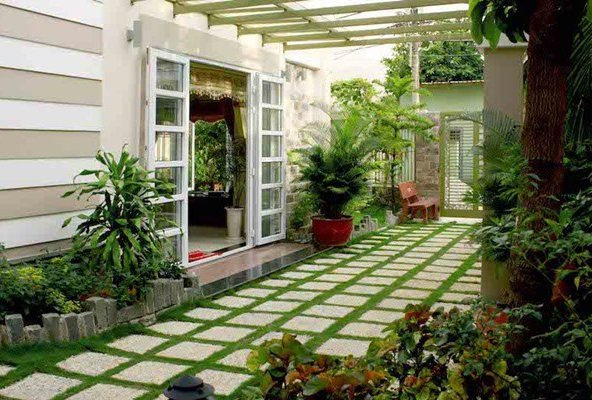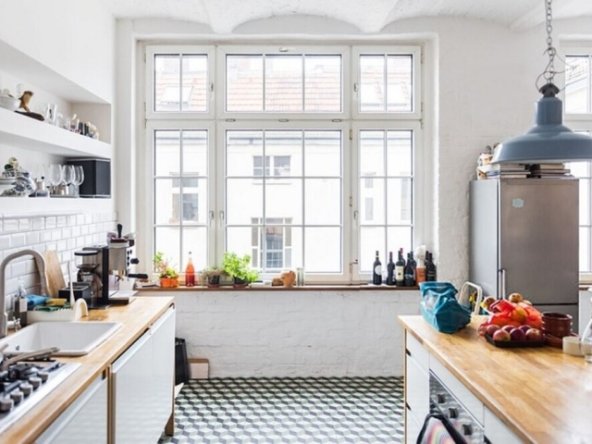Knowing fence costs helps homeowners budget for 2024 installations. The total expense involves more than just material prices. Various factors impact the overall project cost.
A fence cost calculator considers materials, labor, terrain, and local rules. Each property has unique circumstances that affect the final investment. Prices vary across different regions of the United States.
This guide breaks down key components of fence installation costs. It helps you make smart choices balancing quality, durability, and budget. Understanding pricing dynamics and material options can prevent financial surprises.
Strategic planning can lead to significant savings during fence installation. You can create a realistic budget that meets your property enhancement goals. This approach ensures you're prepared for all aspects of the project.
Average Fence Installation Costs Breakdown
Fence installation costs involve many pricing factors. Homeowners should consider various expenses that affect the final price. A professional estimator can help break down these calculations.
Fencing prices depend on several key components. Property owners should expect multiple financial considerations when budgeting for their project.
Material Costs and Pricing Factors
Fencing materials greatly impact overall installation expenses. Here's a breakdown of typical material pricing:
- Wood fencing: $10-$30 per linear foot
- Vinyl fencing: $20-$40 per linear foot
- Chain-link fencing: $10-$20 per linear foot
- Aluminum fencing: $25-$40 per linear foot
Labor Expenses and Regional Variations
Labor costs significantly influence the total fence installation cost. Professional installation rates typically range from $30 to $50 per hour. Regional differences play a substantial role in pricing.
Urban areas often have higher labor rates compared to rural locations.
Permit and Planning Fees
Local regulations require careful consideration. Permit fees can range from $50 to $500, depending on your location and project scope.
Homeowners should check with local municipal offices to understand exact requirements and associated costs.
A thorough fence cost estimator will help you budget for these expenses. This ensures no unexpected financial surprises during your fencing project.
Popular Fencing Materials and Their Price Points
Choosing the right fence material involves balancing cost, durability, and appearance. Homeowners have many options to fit their needs and budget. Let's explore some popular fencing materials and their prices.
Wood fencing offers classic appeal at various price points. Pressure-treated pine is affordable, costing $10-$20 per linear foot. Cedar provides a premium look for $20-$35 per linear foot.
- Vinyl fencing is low-maintenance and costs $20-$40 per linear foot
- Chain-link is budget-friendly at $10-$20 per linear foot
- Wrought iron is a high-end option, priced $30-$50 per linear foot
Composite materials are durable and versatile, costing $25-$45 per linear foot. They offer a good balance of price and long-term performance.
Fencing prices can vary due to market factors. These include raw material availability, manufacturing costs, and local demand. Research local suppliers and get multiple quotes to find the best value for your needs.
How Much Does a Fence Cost Per Linear Foot
Knowing fence cost per linear foot helps with accurate budgeting. A fence cost calculator estimates total project expenses. It breaks down pricing based on measurements and materials.
Fence installation costs typically range from $10 to $35 per linear foot. This pricing varies widely based on several key factors.
Rural vs Urban Installation Rates
Location greatly affects fence costs. Urban areas often have higher installation rates. This is due to increased labor costs and complex permit requirements.
Other factors include tighter property constraints and higher material transportation expenses.
Seasonal Price Fluctuations
Fence installation prices can change throughout the year. Peak season (late spring to early summer) typically sees higher rates. Winter months might offer more competitive pricing from contractors.
Geographic Cost Differences
Regional variations impact fence installation expenses. Midwest and rural Southern states tend to have lower costs. Coastal regions like California or New York have higher labor and material prices.
Homeowners should use a fence cost calculator for accurate pricing. Getting multiple quotes helps determine costs for specific locations and projects.
Budget-Friendly Fencing Solutions
Looking for affordable fencing? There are cost-effective options that won't break the bank. The goal is to balance initial costs with long-term value and function.
Here are some budget-friendly fence strategies to consider:
- Partial fencing for strategic property coverage
- Repurposed or recycled materials
- DIY installation techniques
- Choosing lower-cost materials
Wood chain-link and wire mesh are among the most affordable fencing options. These materials usually cost $5-$15 per linear foot. Vinyl and aluminum fencing may cost more upfront but need less maintenance.
Smart homeowners can save money through creative approaches:
- Purchase materials during off-season sales
- Compare multiple supplier quotes
- Select standard fence heights and designs
- Invest in quality materials that prevent frequent replacements
When choosing a fence, focus on durability and functionality. Don't just go for the cheapest option. Pick materials that can withstand local weather and protect your property.
DIY installation can save on labor costs. But make sure you have the right skills and tools first. Planning and research are key to finding a fence that's both affordable and practical.
Hidden Costs in Fence Installation
Many homeowners overlook crucial expenses when budgeting for fence installation. These hidden costs can greatly impact the total price. Knowing these expenses helps prevent surprises and ensures a more accurate budget.
Ground Preparation Expenses
Preparing the ground for fencing involves several unexpected costs. Your property's terrain and landscape can significantly increase labor expenses.
- Land clearing and debris removal
- Soil grading and leveling
- Rock or root removal
- Drainage system modifications
Maintenance and Repair Considerations
Different fencing materials need varying levels of upkeep. Wooden fences usually require more frequent repairs and treatments than vinyl or aluminum options.
- Annual staining or sealing for wood fences
- Rust prevention for metal fencing
- Replacement of damaged panels
- Periodic cleaning and inspection
Additional Hardware and Accessories
Several accessories can boost functionality and appeal beyond basic fence panels. These extras will increase your overall fence installation cost.
- Custom gates with specialized hardware
- Decorative post caps
- Lighting fixtures
- Security enhancements
Planning for these potential expenses helps create a more complete financial strategy. Homeowners can avoid unexpected costs by considering all aspects of fence installation.
DIY vs Professional Fence Installation
Your fence installation decision impacts cost and success. DIY can save money, but it's complex. Professional installation offers expertise but costs more.
DIY fence installation might cut labor costs. However, consider these factors before starting:
- Required tools and equipment
- Technical skills and experience
- Time commitment
- Physical labor demands
Professional fence installation has key benefits. Contractors know local codes and handle tough terrain. They offer warranties and ensure:
- Precise property line measurement
- Proper material selection
- Efficient installation techniques
- Long-term durability
DIY can save money upfront. But unexpected issues may increase costs. Professionals bring specialized knowledge that prevents costly mistakes.
Evaluate your skills, time, and budget carefully. Compare DIY savings to expert installation benefits.
Get quotes from multiple fencing contractors. Compare rates and services. Assess the long-term value of professional work against DIY savings.
Factors Affecting Your Fence Installation Budget
Planning a fence installation requires careful thought about many elements. These can greatly impact your overall budget. A good fence cost estimator looks at more than just materials and labor.
Your property's unique challenges can affect costs imieniny dzisiaj and installation. Knowing these can help avoid surprise expenses. Let's explore key factors that influence fencing prices and complexity.
Property Line Accuracy and Surveying
Knowing exact property lines is crucial before starting. Professional surveying prevents neighbor disputes and boundary issues. Surveys usually cost $300 to $800, based on property size and terrain.
- Obtain accurate property boundary documentation
- Verify legal property lines before installation
- Budget for potential surveying expenses
Terrain and Site Accessibility Challenges
Landscape features greatly affect installation difficulty. Slopes, rocks, or dense plants can increase labor costs. They may also require special equipment. Your fence cost estimator should carefully assess these site-specific challenges.
- Assess ground slope and soil composition
- Consider potential excavation requirements
- Plan for additional equipment or specialized labor
Local Building Code Requirements
City rules strongly influence fencing prices and designs https://moneycore.pl/najnizsza-krajowa-2024/. Zoning laws often limit fence height, materials, and placement. Research local codes to avoid fines and delays.
- Review local zoning department guidelines
- Obtain necessary permits before construction
- Understand potential height and material restrictions
Addressing these factors helps create a realistic budget. It also prevents unexpected costs during fence installation. Plan ahead for a smoother, more predictable project.
Maximizing Value in Your Fencing Investment
Choosing the right fence involves more than just upfront costs. Smart planning and careful consideration of long-term benefits are essential. A reliable fence cost calculator can help homeowners make informed decisions.
When evaluating fencing, prioritize durable materials that need minimal maintenance. Composite wood, vinyl, and aluminum may cost more initially but reduce future expenses. Compare quotes from local suppliers to find budget-friendly, quality materials.
Timing your fence installation can impact overall costs. Schedule during off-peak seasons when contractors offer competitive pricing. Some professionals give discounts in winter or early spring.
Planning your project in phases can help manage financial constraints. This approach allows you to achieve your fencing goals over time.
A well-planned fence enhances property value, security, and aesthetic appeal. Analyze options and use a fence cost calculator. This helps create a functional and financially sound perimeter that meets your needs.



